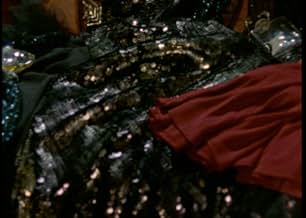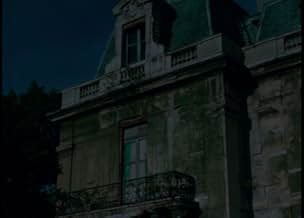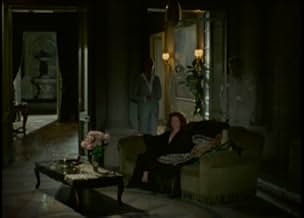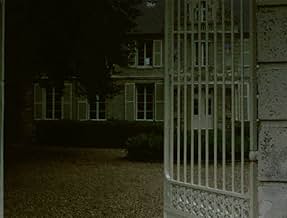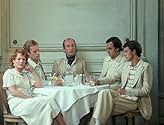VALUTAZIONE IMDb
6,1/10
2788
LA TUA VALUTAZIONE
Aggiungi una trama nella tua linguaAnne-Marie Stretter, wife of a French diplomat, lives in 1930s India. She takes many lovers as systems of oppression decay around her.Anne-Marie Stretter, wife of a French diplomat, lives in 1930s India. She takes many lovers as systems of oppression decay around her.Anne-Marie Stretter, wife of a French diplomat, lives in 1930s India. She takes many lovers as systems of oppression decay around her.
- Regia
- Sceneggiatura
- Star
- Premi
- 3 candidature totali
Michael Lonsdale
- Le vice-consul de Lahore
- (as Michel Lonsdale)
Nicole-Lise Bernheim
- Voix de la réception
- (voce)
- (as Nicole Lise Bernheim)
Recensioni in evidenza
This film was a real surprise when I discovered it in the early '90s and it became one of my favorites. I enjoyed the general slow pace of the film, its dreaminess and yet its inner violence.It's exactly what I imagine tropical climates do to influence your mood .In the same vein Marguerite Duras made "L' Amant ", a semi autobiographical film.
Anyway, you CAN find the video VHS-SECAM . I "stumbled" on it in a bookshop in Montpellier a couple of years ago. Here are the details :
India SONG Ecrit par Marguerite Duras
Entretiens Dominique Noguez Réalisation Jérôme Beaujour et Jean Mascolo Benoît Jacob Vidéo 2001
Anyway, you CAN find the video VHS-SECAM . I "stumbled" on it in a bookshop in Montpellier a couple of years ago. Here are the details :
India SONG Ecrit par Marguerite Duras
Entretiens Dominique Noguez Réalisation Jérôme Beaujour et Jean Mascolo Benoît Jacob Vidéo 2001
Once again Duras uses what she considers her great discovery in La femme du Gange, the timeless voices that comment with a certain independence on what is shown in the images.
Again Duras and her favorite characters: Anna-Marie Stretter, the vice consul, Michael Richardson, Lola V Stein...
Once again, a past story that comes to life before our eyes, told in a somewhat convoluted way, with jumps back and forth, with insistence on the same episodes, as in memories, but which becomes difficult to follow in all its implications if you do not know previously this little world created by Duras.
Now we have Anne-Marie Stretter back in Calcutta, to the palace of her ambassador husband, dragging behind her that Michael Richardson who has abandoned Lola Valerie Stein in S Thala. Back in Calcutta, Anna continues to lead a promiscuous life in total agreement with her husband, and now with a more or less official lover, Michael Richardson. During a reception, she is introduced to the outlawed former consul in Lahore.
Again the voices narrating, although not exactly, what we see in the images. In this case Duras creates a more complex soundtrack, a mix of timeless voices, the leprous beggar from Savannakhet, society voices at a reception for the ambassador, the author herself in dialogue, and finally the dialogues of the characters themselves that we see dancing without moving their lips...
The images show an essential illustration, sometimes reduced to its fundamental gestures, and languidly dedramatized, a kind of setting in style of what we are told, completely devoid of blood, in endless dances, glances at the voice-over space, or pantomimes of some especially important scenes.
Most of it takes place during a reception for the ambassador, Anna Marie's husband, but what we see in the images is an idealized recreation, where the environment disappears and only remain the disembodied voices of the attendees and a small space of a room, duplicated by a huge wall mirror and overlooking the terrace.
The characters wander through it, dancing while their off-screen voices slowly pronounce their dialogues, while the characters we see refuse us those dialogues on their lips and only contextualize them in glances. It is a past that is shown to us as the images that summarize it in our memory or dreams.
Delphine Seyring is magnificent and beautiful as the focus of attention, the dissatisfied and capricious woman who attracts all the men around her. To announce her story as a woman subjected to various systems of oppression, it seems to us that she enjoys quite a few freedoms, if she simply decided to make a decision. Delphine looks wistfully out the window of the luxurious hotel, aware of life out there, and of life in her Venice past, but unable to break her bonds. Leprosy...
Michael Lonsdale as the former vice-consul, deeply ridiculous, with teary eyes, avoided by everyone because of a previous scandal in Lahore, in love with the protagonist and feared by her as if it were a Jack the Ripper in a tuxedo. He has to pronounce phrases like "Lahore, c'est moi", which is not easy for him either. This self-destructive and crazed guy proposes to Anne-Marie a scandal during the evening, which seems to be the only thing that can breathe some life and passion into this environment of mannequins.
We are not very sure of the authenticity of the love between Michael and Anne-Marie, of course Michael likes to caress Anne's red hair, which we know is a wig, but something must not be going very well, it definitely tastes too little for both of them. , and we learn that they have tried to commit suicide before in a brothel room.
Mathieu Carrière is another young man who seems to want to join Anna's list of lovers. All we can say about him is that he is a awfully bad dancer.
After the disastrous reception, we have Anna in her red party dress, reclining in a chair and surrounded by her lovers in their evening tuxedos. All of enormous theatricality while Duras tells us about the lady's destiny, her trip to the islands, the flora, fauna, landscape and population of the area, generally answering a man's questions in a strange dialogue in which sometimes it seems that Duras is guiding him through a story and images that she creates little by little, answering his questions... until in the end the man seems capable of accompanying Duras in continuing to tell the story.
In the next scene we have Anna arriving with her boys at the "White India" Hotel, the Prince of Wales. We see her walking down the luxurious hallway with a distant smile. And the ex consul appears again.
In the last scene, the characters seem tired of their erotic stories, and their menage-a-trois, and decide to end the situation.
The tone is desperately and exquisitely kitsch, of a sought-after artificiality, of great formal beauty that is somewhat repugnant. Technically it is much more sophisticated than the more authentic La femme du Gange; the images here revel in the luxurious interiors, in the texture of the dresses and curtains, in the beauty of the nights in the gardens surrounding the ambassador's palace, the sophisticated interiors of luxury hotels, in the body of Anne-Marie Stretter languid with desire, dissatisfaction and heat.
The voices, as always, remember or discover the story with their Oui, cest ca, je me rappelle... the usual taglines of Duras' recitations.
The music alternates the danceable India Song with a very languide playing of one of Beethoven's Diabelli variations.
Another emotional zombie film, with a suffocating luxury atmosphere, of a small group of privileged people obsessed with their navel, and enjoying without enjoying their rich people's paradise, while out there it is 1937, the war continues in China, Shanghai bombed, the Spanish civil war, the Nuremberg Congress... the voice of the beggar from Savannakhet.
The film can seem laughable and ridiculous or fascinating, or at times one thing and the other, or both at the same time. But we cannot deny that it is one of Duras's most notable works, within her very special conception of narrative. Based on a play that was never performed.
Again Duras and her favorite characters: Anna-Marie Stretter, the vice consul, Michael Richardson, Lola V Stein...
Once again, a past story that comes to life before our eyes, told in a somewhat convoluted way, with jumps back and forth, with insistence on the same episodes, as in memories, but which becomes difficult to follow in all its implications if you do not know previously this little world created by Duras.
Now we have Anne-Marie Stretter back in Calcutta, to the palace of her ambassador husband, dragging behind her that Michael Richardson who has abandoned Lola Valerie Stein in S Thala. Back in Calcutta, Anna continues to lead a promiscuous life in total agreement with her husband, and now with a more or less official lover, Michael Richardson. During a reception, she is introduced to the outlawed former consul in Lahore.
Again the voices narrating, although not exactly, what we see in the images. In this case Duras creates a more complex soundtrack, a mix of timeless voices, the leprous beggar from Savannakhet, society voices at a reception for the ambassador, the author herself in dialogue, and finally the dialogues of the characters themselves that we see dancing without moving their lips...
The images show an essential illustration, sometimes reduced to its fundamental gestures, and languidly dedramatized, a kind of setting in style of what we are told, completely devoid of blood, in endless dances, glances at the voice-over space, or pantomimes of some especially important scenes.
Most of it takes place during a reception for the ambassador, Anna Marie's husband, but what we see in the images is an idealized recreation, where the environment disappears and only remain the disembodied voices of the attendees and a small space of a room, duplicated by a huge wall mirror and overlooking the terrace.
The characters wander through it, dancing while their off-screen voices slowly pronounce their dialogues, while the characters we see refuse us those dialogues on their lips and only contextualize them in glances. It is a past that is shown to us as the images that summarize it in our memory or dreams.
Delphine Seyring is magnificent and beautiful as the focus of attention, the dissatisfied and capricious woman who attracts all the men around her. To announce her story as a woman subjected to various systems of oppression, it seems to us that she enjoys quite a few freedoms, if she simply decided to make a decision. Delphine looks wistfully out the window of the luxurious hotel, aware of life out there, and of life in her Venice past, but unable to break her bonds. Leprosy...
Michael Lonsdale as the former vice-consul, deeply ridiculous, with teary eyes, avoided by everyone because of a previous scandal in Lahore, in love with the protagonist and feared by her as if it were a Jack the Ripper in a tuxedo. He has to pronounce phrases like "Lahore, c'est moi", which is not easy for him either. This self-destructive and crazed guy proposes to Anne-Marie a scandal during the evening, which seems to be the only thing that can breathe some life and passion into this environment of mannequins.
We are not very sure of the authenticity of the love between Michael and Anne-Marie, of course Michael likes to caress Anne's red hair, which we know is a wig, but something must not be going very well, it definitely tastes too little for both of them. , and we learn that they have tried to commit suicide before in a brothel room.
Mathieu Carrière is another young man who seems to want to join Anna's list of lovers. All we can say about him is that he is a awfully bad dancer.
After the disastrous reception, we have Anna in her red party dress, reclining in a chair and surrounded by her lovers in their evening tuxedos. All of enormous theatricality while Duras tells us about the lady's destiny, her trip to the islands, the flora, fauna, landscape and population of the area, generally answering a man's questions in a strange dialogue in which sometimes it seems that Duras is guiding him through a story and images that she creates little by little, answering his questions... until in the end the man seems capable of accompanying Duras in continuing to tell the story.
In the next scene we have Anna arriving with her boys at the "White India" Hotel, the Prince of Wales. We see her walking down the luxurious hallway with a distant smile. And the ex consul appears again.
In the last scene, the characters seem tired of their erotic stories, and their menage-a-trois, and decide to end the situation.
The tone is desperately and exquisitely kitsch, of a sought-after artificiality, of great formal beauty that is somewhat repugnant. Technically it is much more sophisticated than the more authentic La femme du Gange; the images here revel in the luxurious interiors, in the texture of the dresses and curtains, in the beauty of the nights in the gardens surrounding the ambassador's palace, the sophisticated interiors of luxury hotels, in the body of Anne-Marie Stretter languid with desire, dissatisfaction and heat.
The voices, as always, remember or discover the story with their Oui, cest ca, je me rappelle... the usual taglines of Duras' recitations.
The music alternates the danceable India Song with a very languide playing of one of Beethoven's Diabelli variations.
Another emotional zombie film, with a suffocating luxury atmosphere, of a small group of privileged people obsessed with their navel, and enjoying without enjoying their rich people's paradise, while out there it is 1937, the war continues in China, Shanghai bombed, the Spanish civil war, the Nuremberg Congress... the voice of the beggar from Savannakhet.
The film can seem laughable and ridiculous or fascinating, or at times one thing and the other, or both at the same time. But we cannot deny that it is one of Duras's most notable works, within her very special conception of narrative. Based on a play that was never performed.
'India Song' written and directed in 1975 by Marguerite Duras can be either a mesmerizing or a painful cinematic experience. The French writer whose literary work largely reflected her life experience in Asia and her fascination with this continent has directed a number of films that bring to the screen or are inspired by her books. This is the case with 'India Song', which is probably one of her most extreme films to experiment with. The result is in this case a film that bears little resemblance to the films of the era in which it was created, being closer to what we call 'video art' today. Many viewers will probably not be able to overcome the barriers raised intentionally by the author and will abandon the viewing before the end or will complain about the wasted time if they resisted to the end. A few others will be excited. I confess that I was somewhere in the middle. I had a hard time watching. I didn't like the film, but I think that I understood why the author took the chosen creative paths that she took and why a minority of viewers have a good chance to like it.
There is a story in this film, but it is not what is happening that is central but the way the story is told. Anne-Marie Streyter (Delphine Seyrig), who is born in Indochina (same as the writer and director of the film), is the wife of the French ambassador accredited in Calcutta. Her life takes place in an atmosphere of boredom and decadence, sprinkled with extramarital affairs with young lovers, an attitude also attributed to Duras in her own private life. The only dissonant event would be the hopeless advances of the consul in Lahore (Michael Lonsdale) in love with the heroine, which when rejected will bring him despair. The set and the surrounding nature suggest the physical and moral erosion of the colonial way of life at its historical twilight. The echoes of the tragic events that were taking place in those years in different parts of the planet hardly reach this world suspended between dream and history, but the imminence of the tragedy is clear.
Viewers who dare to watch this film must be warned that they will witness a cinematic experience that is different than the usual. The long and slow frames have a beauty of paintings, and in them the characters move slowly, as if they want to freeze time in place. The heroes do not speak to each other, we rather have the feeling that we are visiting an art exhibition accompanied by a rich text, read off-screen, which replaces the interactions between the characters but also part of their feelings. The actors are merely silhouettes, they play their roles in kind of an almost frozen mimicry. I give a special mention to the performance of Michael Lonsdale, who is said to consider the consul in Lahore his favorite role. The filming was not done in India, but near Paris, in one of the mansions abandoned by the Rothschild family during World War II and since then fallen into ruin. The local color is therefore not the authentic one, but the one imagined by the author. The music, very appropriate, is stylish and obsessive. 'India Song' is a beautiful film, the atmosphere is dreamy, but the excess of method makes it difficult to watch. Most spectators, if they resist, will sooner or later look for the fast-forward button.
There is a story in this film, but it is not what is happening that is central but the way the story is told. Anne-Marie Streyter (Delphine Seyrig), who is born in Indochina (same as the writer and director of the film), is the wife of the French ambassador accredited in Calcutta. Her life takes place in an atmosphere of boredom and decadence, sprinkled with extramarital affairs with young lovers, an attitude also attributed to Duras in her own private life. The only dissonant event would be the hopeless advances of the consul in Lahore (Michael Lonsdale) in love with the heroine, which when rejected will bring him despair. The set and the surrounding nature suggest the physical and moral erosion of the colonial way of life at its historical twilight. The echoes of the tragic events that were taking place in those years in different parts of the planet hardly reach this world suspended between dream and history, but the imminence of the tragedy is clear.
Viewers who dare to watch this film must be warned that they will witness a cinematic experience that is different than the usual. The long and slow frames have a beauty of paintings, and in them the characters move slowly, as if they want to freeze time in place. The heroes do not speak to each other, we rather have the feeling that we are visiting an art exhibition accompanied by a rich text, read off-screen, which replaces the interactions between the characters but also part of their feelings. The actors are merely silhouettes, they play their roles in kind of an almost frozen mimicry. I give a special mention to the performance of Michael Lonsdale, who is said to consider the consul in Lahore his favorite role. The filming was not done in India, but near Paris, in one of the mansions abandoned by the Rothschild family during World War II and since then fallen into ruin. The local color is therefore not the authentic one, but the one imagined by the author. The music, very appropriate, is stylish and obsessive. 'India Song' is a beautiful film, the atmosphere is dreamy, but the excess of method makes it difficult to watch. Most spectators, if they resist, will sooner or later look for the fast-forward button.
She's great, it's her vision which is superb. She made this film cos she wanted us to be a poet. No wonder India Song is very unique among all other films. I watched a lot of films, but I've never been met a picture like this. Which threaten you to be a poet. No action, no story, no climax, just her vision. To watch these art house flicks, process of understanding and analyzing is most important, it will sharpen up your vision, then you can use it in your everyday life, and it will definitely makes your life richer mentally.
Someone once said, to read Duras's books, it's just like writing a book. So, maybe, to watch her movies is like co-creating a film also.
Old memories is like a ghost story. I once read Mrs. Stretter really exists and India Song based on Duras's memory. It's fun to look at the beautiful ghosts singing and dancing
Someone once said, to read Duras's books, it's just like writing a book. So, maybe, to watch her movies is like co-creating a film also.
Old memories is like a ghost story. I once read Mrs. Stretter really exists and India Song based on Duras's memory. It's fun to look at the beautiful ghosts singing and dancing
I've seen India Song two times. The first time I saw it I fell asleep after thirty minutes or so. There's a scream somewhere in the film that woke me up for a while, but it didn't last. Anyway I was intrigued by the way the images and the narration was juxtaposed, they don't really play the same tune. The images are soft, cool and slow, while the narration was telling us about strong emotions. A pretty good picture of the angst of the priviliged classes in colonial service. I sort of missed the details of the plot, but I think I got the essence of the film. The second time I saw it I stayed awake for five reels (I was counting the shiftmarks) but it was still beautiful and I truly enjoyed it. It's a one of a kind movie and I think it should be credited for that.
Lo sapevi?
- QuizDominique Sanda was the first choice for the leading role, but dropped out and was replaced by Delphine Seyrig.
- ConnessioniEdited into Passage des arts: Marguerite Duras, l'écriture et la vie (2021)
I più visti
Accedi per valutare e creare un elenco di titoli salvati per ottenere consigli personalizzati
- How long is India Song?Powered by Alexa
Dettagli
- Data di uscita
- Paese di origine
- Sito ufficiale
- Lingua
- Celebre anche come
- 印度之歌
- Luoghi delle riprese
- Aziende produttrici
- Vedi altri crediti dell’azienda su IMDbPro
Botteghino
- Budget
- 254.542 FRF (previsto)
- Lordo in tutto il mondo
- 9308 USD
Contribuisci a questa pagina
Suggerisci una modifica o aggiungi i contenuti mancanti



